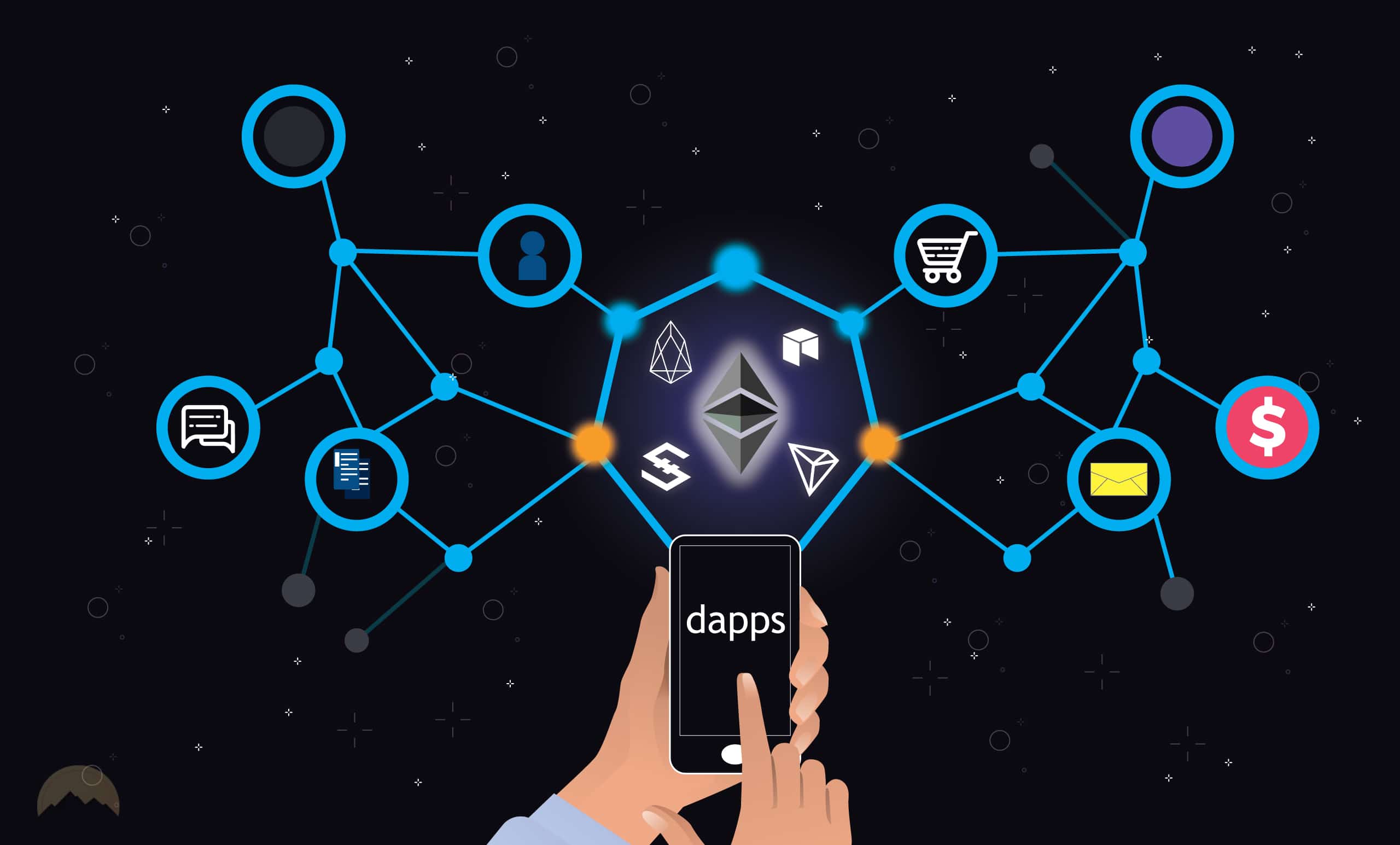What Are DApps?

Blockchain-based decentralized apps have numerous advantages over web or mobile apps, including maintaining privacy, keeping immutable records and bypassing middlemen.
For users, there is hardly any distinction between a decentralized app running on a blockchain and a regular app running online or through an operating system.
The key contrast is that DApps don’t operate on one person’s device or a centralized server like most apps do; instead, they use a distributed and unalterable blockchain network. This makes them incredibly difficult (if not impossible) to censor.
DApps are responsible for running a variety of things, from games to marketplaces and decentralized finance (DeFi) lending platforms.
Although they may look similar on the surface, DApps have several key characteristics that distinguish them from traditional centralized applications.
DApps are open source, which means that the code is available for anyone to see. Updates and changes happen through a consensus mechanism instead of being decided by a developer.
Second, DApps must be decentralized. This means that all data and records generated by the DApp are stored on an immutable, public blockchain.
Furthermore, DApps are motivated by rewards and generate tokens to incentive validators. For these reasons, Bitcoin meets the qualifications of a DApp; though it has its own independent blockchain.
In other words, many DApps use smart contracts as their base. Smart contracts are efficient agreements with the conditions between buyer and seller specified in code. These contracts execute themselves automatically when particular conditions are met, which gets rid of third-parties that would only raise the cost and risk of transactions.
In the blockchain/crypto world, “trustless” smart contracts mean that users can carry out transactions without needing to trust each other. These contracts can be simple – like trading one cryptocurrency for another or buying an item on an NFT marketplace – or very complex.
DApps provide users with zero downtime and data integrity. Smart contracts will be available on every node in the blockchain, meaning that there is no single point of failure. Additionally, thanks to blockchain’s immutable transaction record, DApp users can rest assured that their data cannot be tampered with or censored.
Contracts written using blockchain technology can be executed privately, without needing to identify the parties involved.
DApps and their smart contracts have multiple strengths, but one significant downside is that once a contract is written or an exploit discovered, it cannot be reversed.
In other words, smart contracts should be analyzed to ensure they will function as intended.
Over the last year, Ethereum has become bogged down by an influx of DApps from two rapidly growing segments. This has made transactions slow and very expensive.
The DeFi protocols led the way, with DApps from Ethereum based services such as Compound, Aave and Uniswap. Then came non-fungible tokens or NFTs which are being used for digital art including NBA Top Shots and Beeple’s $70 million collage , to real estate and commodities.
Ethereum is in the process of long, slow transition from proof-of-work to proof-of stake (Ethereum 2.0) in order to resolve issues that have allowed other blockchains–such as Cardano, EOS, Polkadot and Binance Smart Chain (BSC)–to compete for DApp platform dominance.
According to DappRadar, BSC had 105,000 unique active wallets in Q1 2021 while Ethereum only had 75,000 during that same time period.
Ethereum is the clear leader in DApps, more than doubling its total value locked (TVL) to $54 billion in the first three months of 2021. It has a number of benefits when it comes to DApps, starting with Solidity–a well-established language for writing DApps for Ethereum Virtual Machine. EVM is Turing complete which means it can execute any operation that a regular computer can perform.